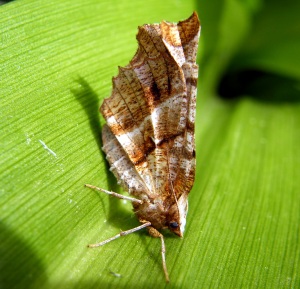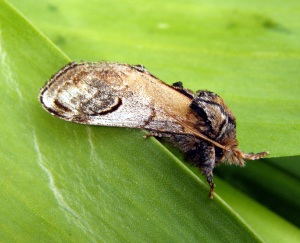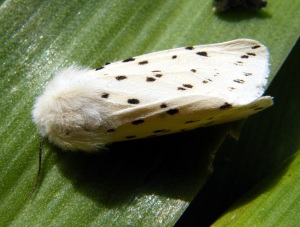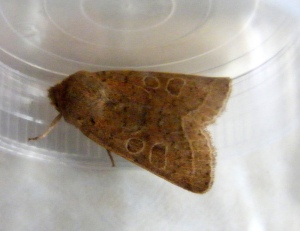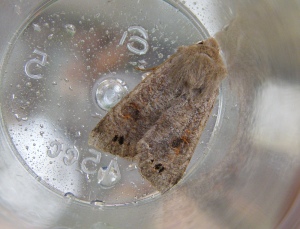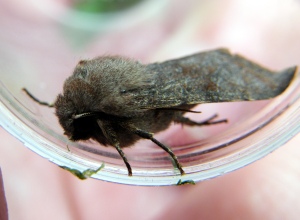When I speak to most people about moths, they are more than happy to tell me that moths are boring, brown and annoying as they flutter around the lights in their house. How very wrong they are!
Most people appreciate butterflies and the variety and colour of them. What they don’t realise is that moths can be just as colourful, but with a wider variety!
There are over 800 different species of macro moth in the UK (Macro moths being those larger than a fingernail, generally) compared to only 50 or so butterflies!
To highlight this, SWT have run a variety of moth nights throughout the summer months at the various reserves in Fife. We’ve had 4 events at Cullaloe, ranging from very productive to hopelessly quiet.
The most recent (and last at Cullaloe for the year) event was held on the evening of 18th September, which was part of National Moth Night, a national celebration of moths and moth trapping.
Throughout the evenings of 18th and 19th September, there were literally hundreds of moth events accessible for the public up and down the UK. It isn’t all fun and games, though. The serious side to the National Moth Nights is that all of these sites were recording the species and numbers of moths present. It’s like a snapshot of the UK, charting the state of moths throughout the country.
Now, onto the event itself!
We set up two traps on the reserve. One was based at the pine trees next to the viewing screen and the other was in the willow scrub to the east of the spillway. The temperature wasn’t too bad – still in double figures when we set up and there was a fair bit of cloud, which would hopefully have stopped it from dropping too low (the lower the temperature, the less likely we are to see moths). It wasn’t long till we saw our first moth – a Canary-Shouldered Thorn. I’m sure you’ll agree – definitely not a dull, boring moth!
We had several moths in pretty quick succession at this point. I could tell you what we got when, but I think it’s easier at this stage just to show you the list of species – if you want to see what each one looks like, click on its name and you’ll be taken to a website with pictures and info on each species
4 x Canary Shouldered Thorn
2 x Small Wainscot
2 x Square-spot Rustic
11 x Autumnal Rustic
18 x Common Marbled Carpet
4 x Pink-barred Sallow
9 x Red-green Carpet
2 x Sallow
6 x Pine Carpet
5 x Spruce Carpet
3 x Grey Pine Carpet
2 x Brimstone
10 x Frosted Orange
5 x Rosy Rustic
1 x July Highflyer
6 x Black Rustic
1 x Small Phoenix
2 x Autumn Green Carpet
1 x Red-line Quaker
1 x Yellow-line Quaker
There were also 3 other species, which we have yet to confirm ID on.
Now, life as a moth isn’t always a safe place. The darkness hides you from some things, but not from everything – Our moth trap in the willow scrub is testament to that!
At about 9pm, after studying the recent captures at the screen, we took a walk to the willow scrub to see what was going on. When we got there we found… nothing! Not a single moth in sight.
Now, we knew this trap was working, the light was plenty bright enough and was in a nice, big clearing… surely the moths should have been here?!
The answer quickly became apparent as a bat flew right past us, quickly followed by another two! As we stared, watching these flying mammals hurtling past us at lightning speeds, we noticed that there was at least two different species of bat, judging from their size.
The smaller ones, we reckon are almost certainly either Common or Soprano Pipistrelles. The larger ones, on the other hand, we are not sure about. We suspect they could be Daubenton’s Bats that have come over from the loch, their usual hunting ground. They could also be other species, such as Natterer’s Bats, which are also found in Fife. Sadly, we did not have a bat detector with us, so were unable to get any sort of confirmation of this.
Still, it’s good to know that we’ve got a healthy population of bats, whatever species they are!
Now, having read all this and you’re now hankering for a bit of moth action – never fear! There is one final moth night planned for this Friday, 25th September at SWT’s Fleecefaulds Meadow reserve. It begins at 7:30pm and is being hosted by Tim Brain, our resident moth expert. There will even be a bat detector present this time!
We’ll be releasing dates for next year’s moth trapping in the next couple of months, so watch this space!



